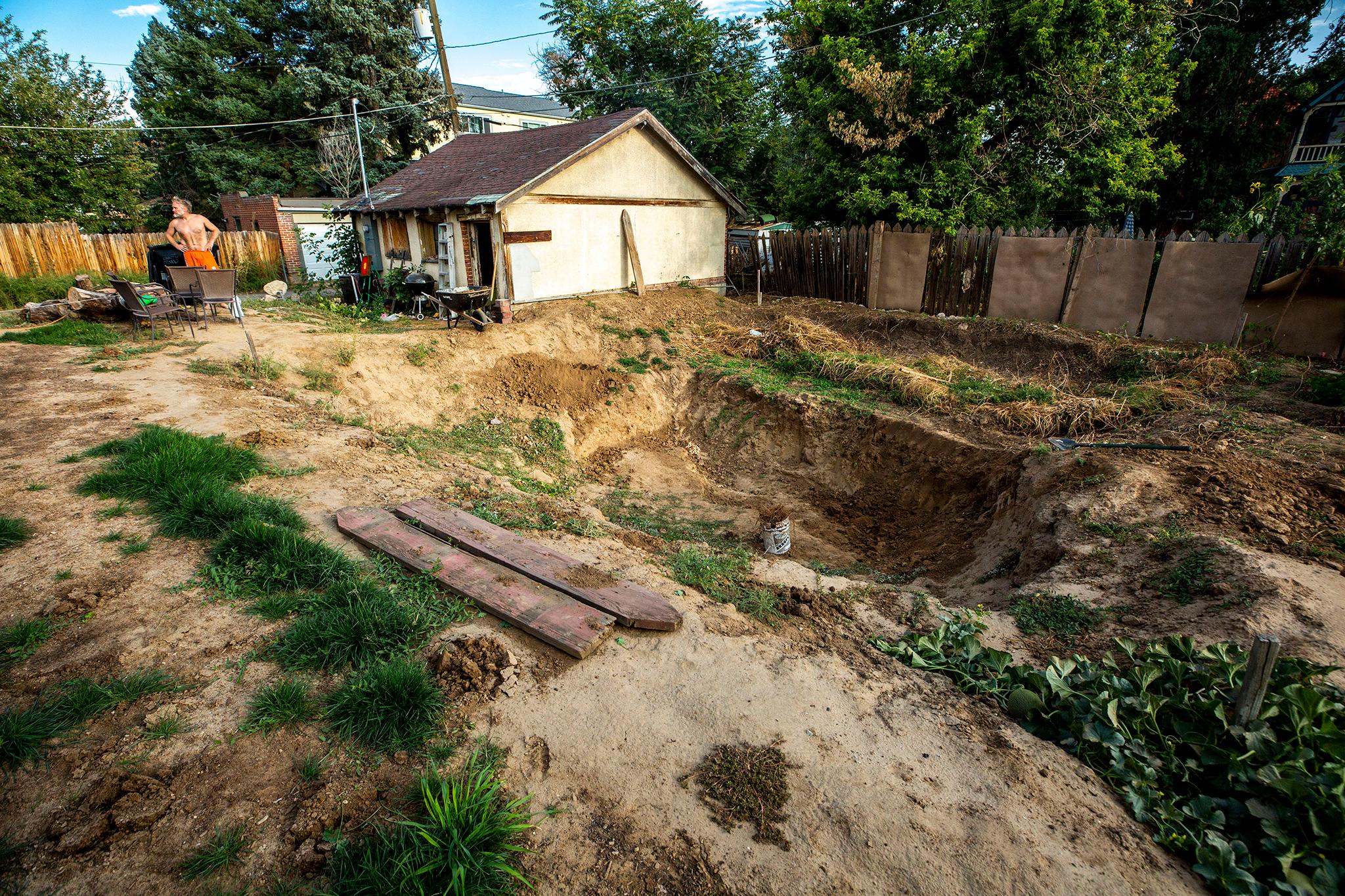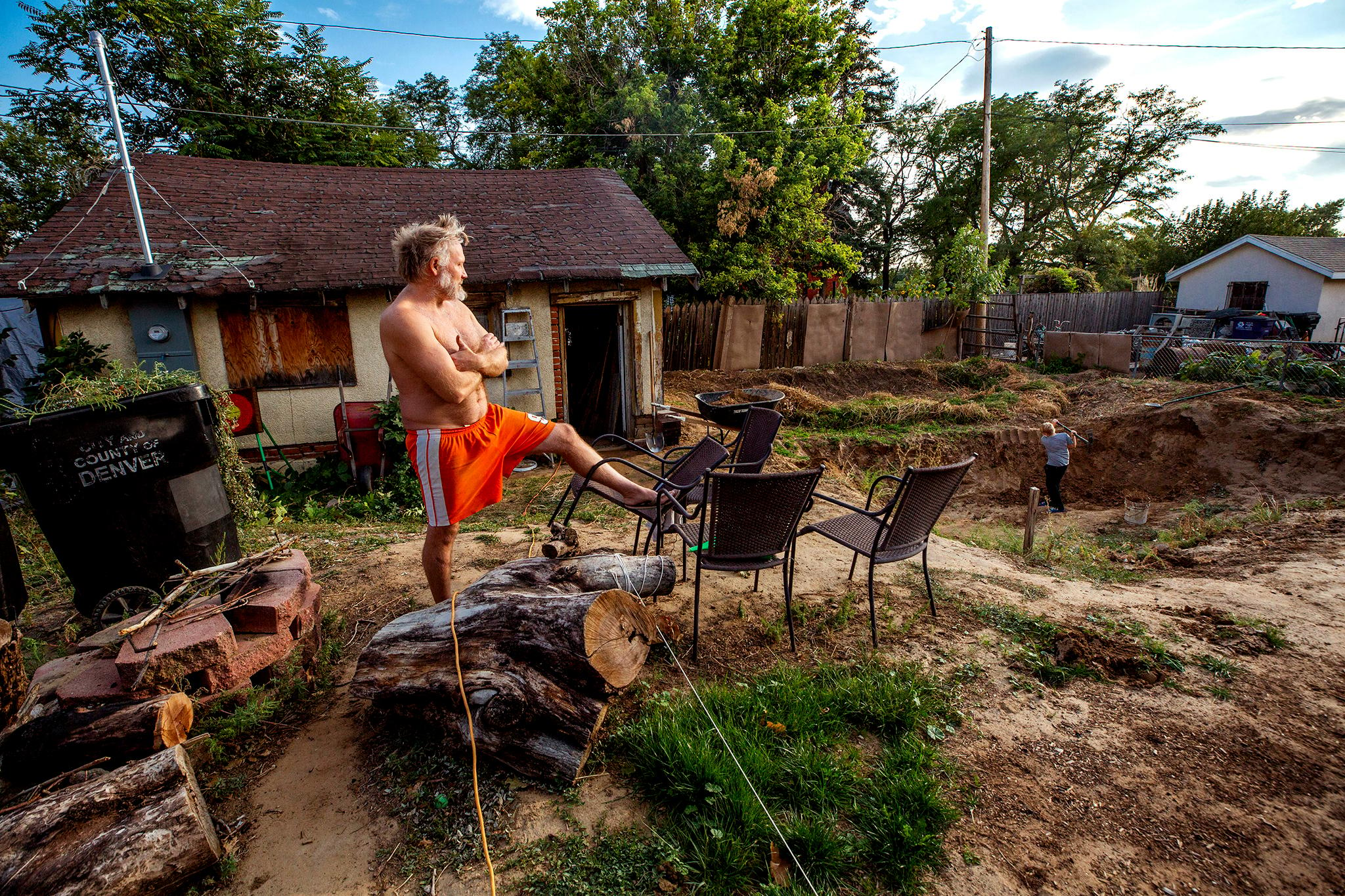Editor's note: Kevin and Dave roamed Bruce Randolph Avenue and talked to most everyone they saw. Every day during Street Week, we're rolling out mini profiles of the everyday heroes they found. Find more here.
"I think of it as a moat that will only protect the house if someone approaches from over there," said Nick Moses and he pointed south, over a freshly dug crater in his backyard on Bruce Randolph Avenue.
His last name, disheveled head of hair, and shirtless, dirty torso might conjure an image of a Biblical character. But he preaches dirt, not commandments.
"That's our quarantine hole," said Moses, underselling what is truly a work of masterful Dad engineering. Moses's 10-year-old son, Quinten, chipped away at the crater's edges with a fun-size shovel as his dad monitored the progress.
Asked if they dug the hole by hand, Moses gave a proud scoff.
"Nah, it seems quite cheating to say it's by hand if you used shovels," he said.

What will eventually be an urban backyard pond is the Moses family's second quarantine project, following a makeshift movie theater in their basement of a fixer-upper they bought more than a decade ago. The elder Moses grew up nearby in Park Hill, where he said he was one of two white kids in his fifth-grade class at Stedman Elementary School on the other side of Colorado Boulevard.
"Now Steadman is a really good mix of Hispanic, white, and Black," Moses said. "The neighborhood is, let's see," he said, mulling then pointing to his neighbors' house. "One way to put it would be that the guys who live in that Victorian have been there since 1980, and in 1980, they couldn't get a bank to lend on that property. They had to treat it like a cash property."
Moses was talking about redlining, when banks refused loans to people of color in an attempt to keep neighborhoods segregated.
"Redlining, gentrification, however you want to phrase these things, the intersection on a family-by-family, house-by-house issue is really different," Moses said. "The reason that my family moved to 25th and Birch in 1977 wasn't because my parents were some kind of racial pioneers. They bought a house in the neighborhood they could afford."
Thirty years later, Moses, his wife, and their three kids did something similar when they moved to Bruce Randolph in Clayton, a historically Black but diversifying neighborhood. They wanted to be within five miles of downtown, and since he pretty much grew up here, this feels like home.
He said he's aware of how the decisions of individual households contribute to gentrification. But moving to Bruce Randolph simply made sense for his family.
"It wasn't anything nefarious, and it wasn't altruistic. It was just moving to a neighborhood where you could afford the neighborhood," Moses said. "The mix of the neighborhood feels good.
"Leroy over here has lived in his house for like 60 years. His garden is amazing, and his lawn is amazing. You know, there are pockets of other kinds of folks moving in, but some of the neighborhood still retains a really old feel, which feels nice."













